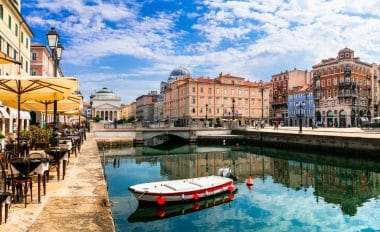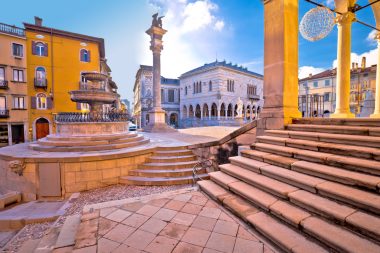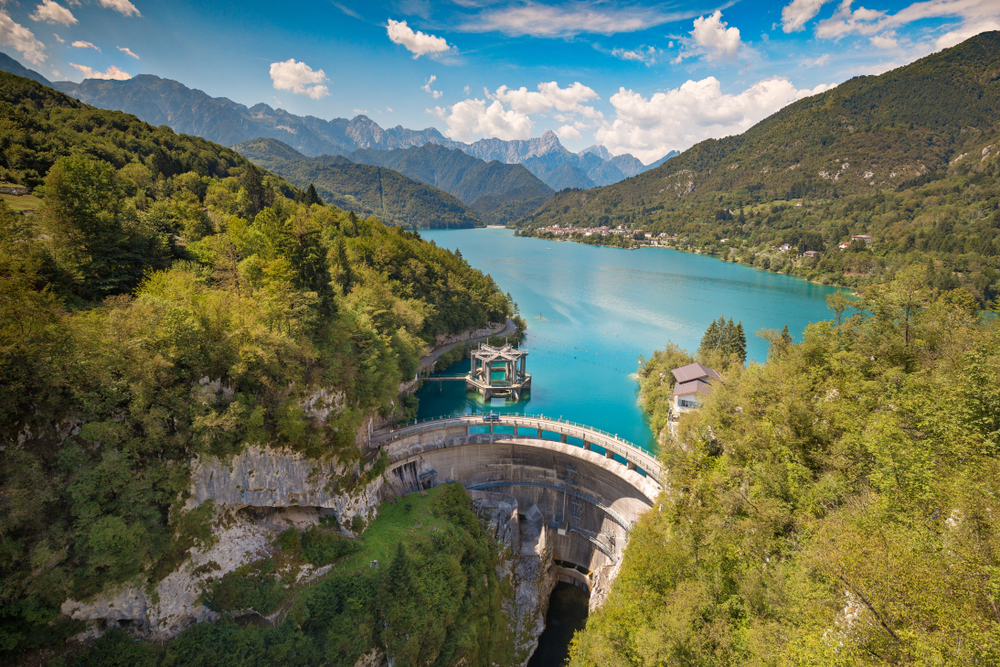Italy is and remains a country of longing for many people worldwide. And that’s only too understandable, because this spot in the south of Europe is one of the most beautiful areas in terms of landscape.
In addition, Italy offers a wide variety of impressions and natural forms due to its unique shape, which is also often compared to a boot. From the majestic mountains of the north to the lovely center and the Mediterranean south, everything is there. In the northeast of the country is the Friuli-Venezia Giulia region. It borders the neighbouring countries of Austria and Slovenia as well as the Adriatic Sea and is characterised by the bizarre mountain worlds of the Dolomites and is known for famous wineries that export their white wine all over the world.
What is special about the Friuli Venezia Giulia region
In this region of Italy, nature is the main actor and at the same time the great attraction. Therefore, this area is also particularly traveled by people who appreciate the unique environment of the mountains and want to get to know them from different perspectives.
But the landscape not only has a wide variety of mountain formations to offer, but in the south there are also many beaches along the Adriatic coast. With Lignano Sabbiadoro there is a beautiful and popular seaside resort where you can enjoy the Italian sun and the famous dolce vita.

Miles of beaches with golden sand invite you to linger, walk and swim here, making this area a true sunny paradise. Especially the lagoon of Maranao, which is separated from the open sea by many islands, is a wonderful place to enjoy the dreamlike and original nature. And this region is also a popular holiday area in winter, because the mountains in the north promise skiing enthusiasts great fun and the best conditions for a lot of fun on and off the slopes and hiking trails.
In Friuli Venezia Giulia, every kind of active holiday is possible and for those interested in art, the different cities of this area offer an additional incentive to travel extensively in this area of Italy.
And the eventful history of this region has also contributed to the fact that a microcosm of different cultures has been able to form here, all of which exist side by side and with each other.
Thus, the capital Trieste was once Austro-Hungarian, then Yugoslav and Italian again. All cultures have left their traces in this area and these can still be clearly seen and felt there today.
What attractions does the area offer?
The port metropolis of Trieste, which is also the largest city in the region, is the cultural starting point of a journey through Friuli-Venezia Giulia. Due to the significant influence of the Habsburgs in this capital, it is also known as the “Vienna of the Adriatic” and the architectural style of this era is clearly recognizable in many places.
Trieste itself is worth a visit due to its location alone and at many points of the city visitors will find a fantastic view over the harbour and the sea as well as a large number of historically interesting buildings and art treasures.
The Castello di Miramare is just as much a part of it as the Castello san Giusto, the Palazzo Pitteri and the many museums and other important places in and around the city.

Aquileia is another cultural site that should not be missed when visiting the Gulf of Trieste. This town, which has been a UNESCO World Heritage Site since 1998, is known for its medieval basilica and its Roman excavations. An open-air museum of a special kind and an unforgettable experience for all visitors interested in archaeology. Also worth seeing is the town of Grado, which is located on an island in the Gulf of Venice and, in addition to beautiful beaches, is particularly impressive with a historic old town in Venetian style.
Again further inland is Udine. A city with squares depicted on the most beautiful Italian postcards and where visitors will find many other interesting buildings in addition to the impressive Castello.
In addition to the works of the painter Tiepolo, Udine is also known for art, antiques and jewellery, which are available for sale everywhere in the pretty old town.
And in the city’s many restaurants, the various wines of the region can be enjoyed and tasted, while the hustle and bustle of the squares and the balmy air invite you to dream and observe.
In general, Friulian dishes are a great pleasure, because the different influences from Slavic, Austrian and Italian cuisine combine to create an exquisite mixture. The “San Daniele” ham, registered as a worldwide trademark, can be tasted and bought on all corners of Udine.
In the west of the region is the third largest city Pordenone, which offers a lot of potential for a nice day trip due to its arcades, palaces and historic old town.
This also applies to Gorizia, the so-called twin city, which is separated from its second half Nova Gorica directly on the Slovenian border only by a river and the national border.
In 2025, both cities will be the European Capital of Culture and thus receive even more fame and attention.
Tips for a trip to Friuli Venezia Giulia
Due to its turbulent history, this Italian region is a melting pot for different cultures. This is also expressed in the languages located there. In addition to the national language Italian, Friulian, Slovenian and German are also recognized as styles.
To spend a holiday in this diverse region, good planning is useful to make the visit as good as possible.


